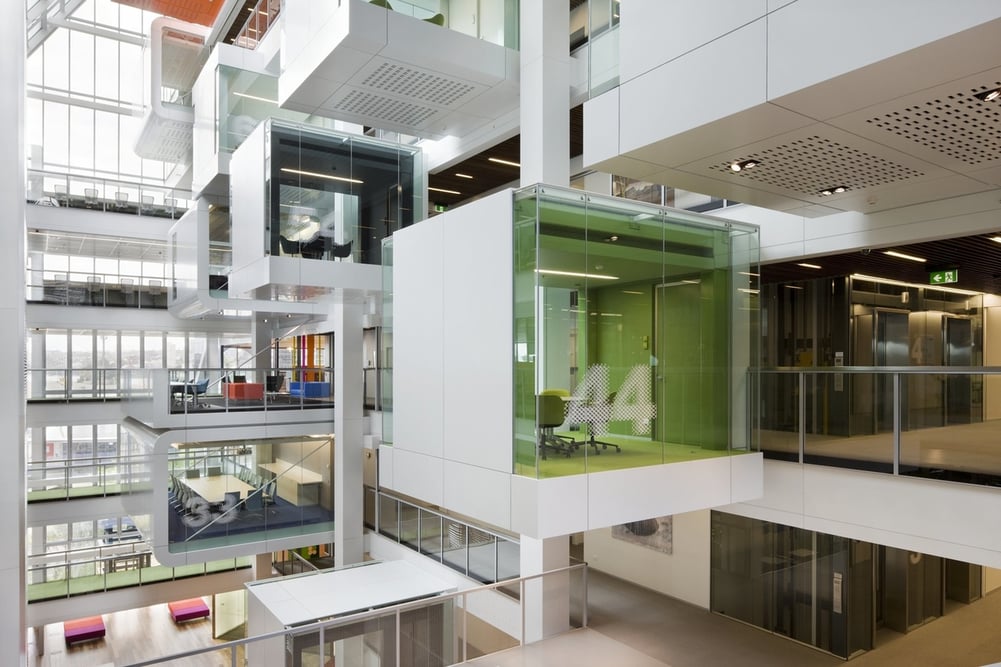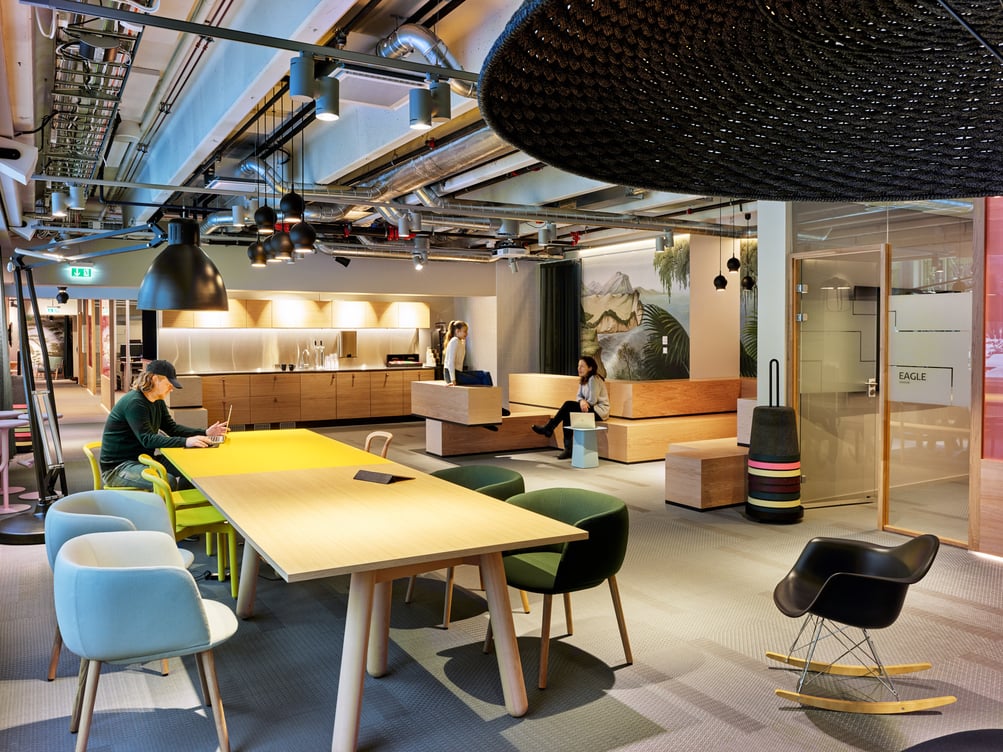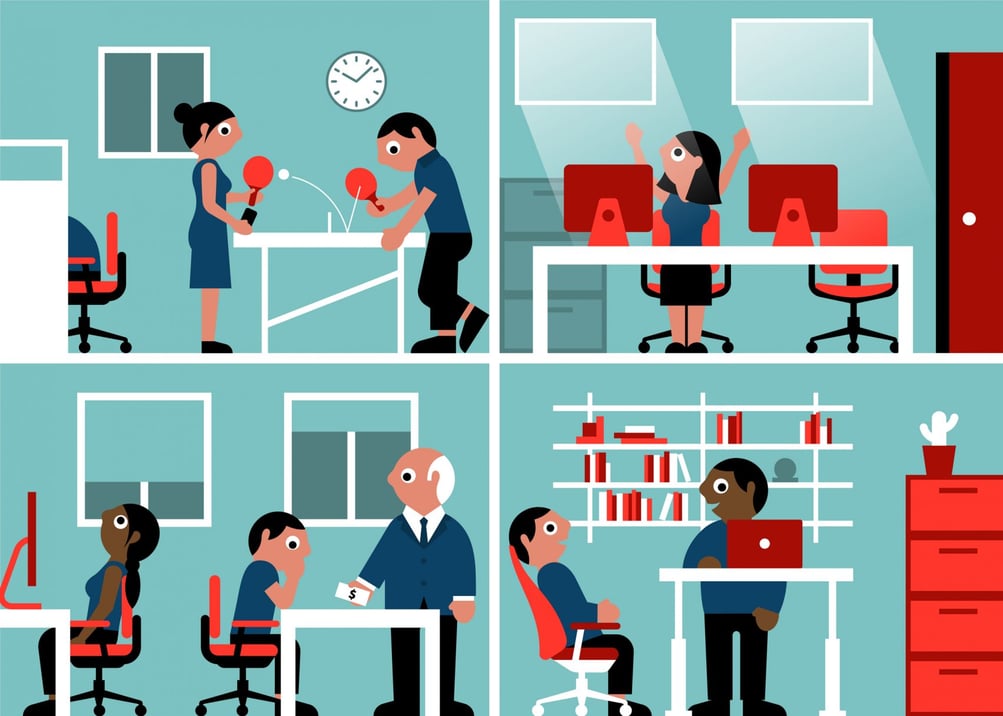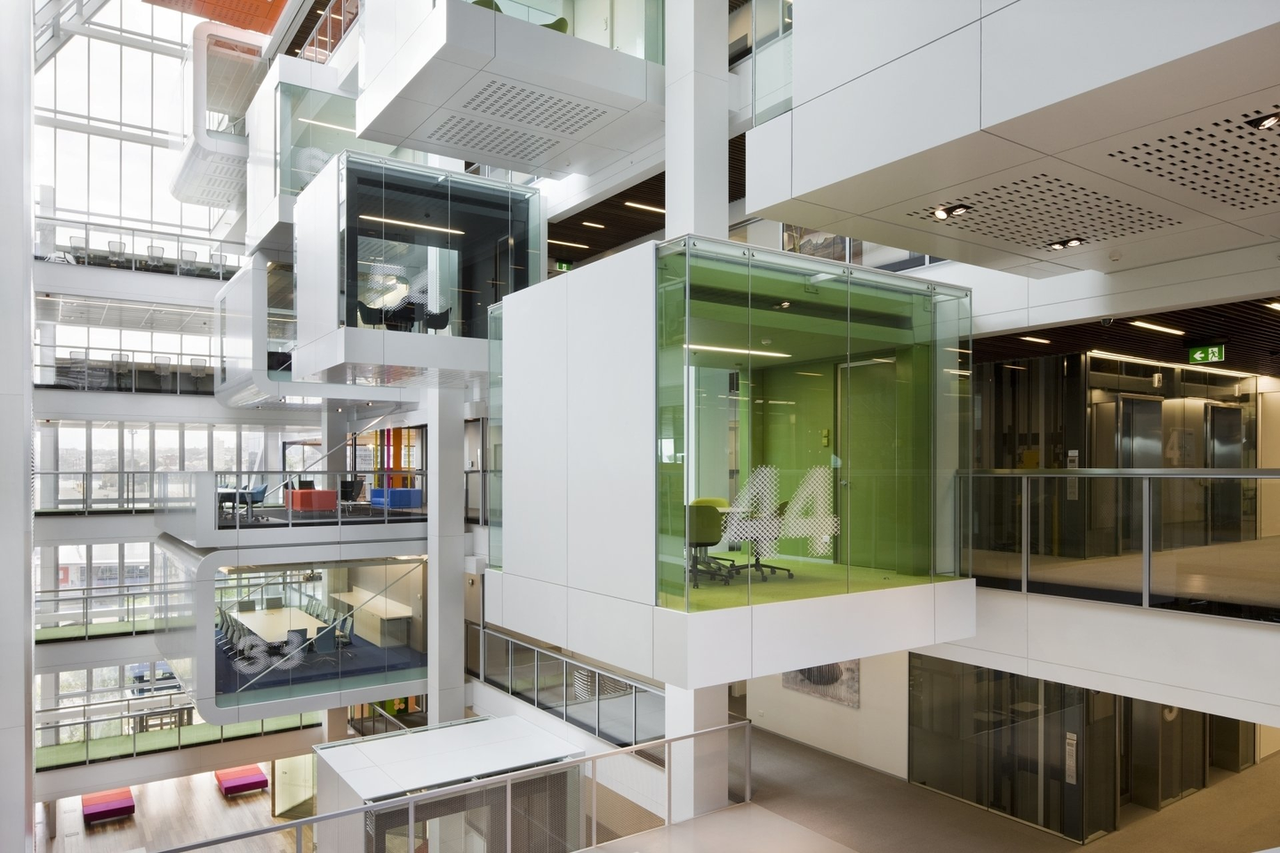‘Modern Workplace’ is becoming the new buzzword as Millennials start to dominate the workforce. But what do we really mean by ‘Modern Workplace’ and how do we best design office environments for future generations?
 Activity-based workplace at Macquariegroup in Sydney. Photo cred: Woods Bagot
Activity-based workplace at Macquariegroup in Sydney. Photo cred: Woods Bagot
Millennials
There’s little doubt the 'Millennials' are different from the generations that preceded them. Including those born between 1982-2000, the ‘Generation Y’ or the ‘Millennials’ is the first generation to have grown up in the middle of a rapid acceleration of digital technology – with the youngest 'Millennials' having no memories of a world without smart devices and the internet.
This digital boom has brought an increasingly closer integration of disruptive technologies into everyday life, introducing both challenges and opportunities to society. In the context of the workplace, businesses are forced to adapt to the expectations on flexibility and technology which the younger generation places on the workplace.
Modern Workplace
‘Activity-Based-Working’ (ABW) and ‘Modern Workplace’ both refer to a workplace strategy which provides employees with an activity-based workplace based around flexibility and collaboration. Often, these are made up by lounges, silent rooms, conversation rooms or different types of creative spaces replacing traditional open plan offices in which employees have their own desk. The key idea of the Modern Workplace is that the office doesn't constitute a physical location but an activity that varies – and where employees can physically locate themselves where it's most suitable for them to perform their job.
In short: the ultimate goal of a Modern Workplace is to provide employees with maximum flexibility in working style.

Storebrand Digital Garden has been designed with a modern workplace strategy in mind. Photo: Brandl AS
Modern workplace and technology
Providing employees with maximum flexibility in working style requires access to up-to-date technology which enables employees to work effectively within the office, as well as remotely. According to a study conducted by RingCentral in the US, in which Millennials from 346 businesses where interviewed, as much as 50 % reported that freedom to work from any location improves work/life balance.
With the development of workflow automation and communication applications such as Slack and direct messaging, 2018's employees don't need to be stuck at their desk 8 hours a day. The ability to work remotely is indeed a benefit that the Millennials appreciate.
 An illustration interpreting the modern workplace. Photo Cred: Dezeen
An illustration interpreting the modern workplace. Photo Cred: Dezeen
Designing for the needs of all generations – the real challenge
As the dominant generation today is 'Generation Y', it is logical that we design spaces for them. However, the real challenge of designing spaces which accommodate today's employees isn't solely about finding a strategy optimising the work of a particular generation but taking all employees' different needs, expectations and requests into account and design an office strategy that includes both older generations and future generations – while including wheelchair users, transgender and the unique needs of future generations.
For instance; 'the digital natives', 'Generation Z' (born 2000 and later) will soon enter the workforce.
How do we design spaces that accommodate a generation that can't relate to a world without technology while simultaneously accommodating for people born in the 50s and 60s?
There is no simple answer to that question, but what seems evident is that we need to broaden the perspective and include the needs of all generations. Now.

